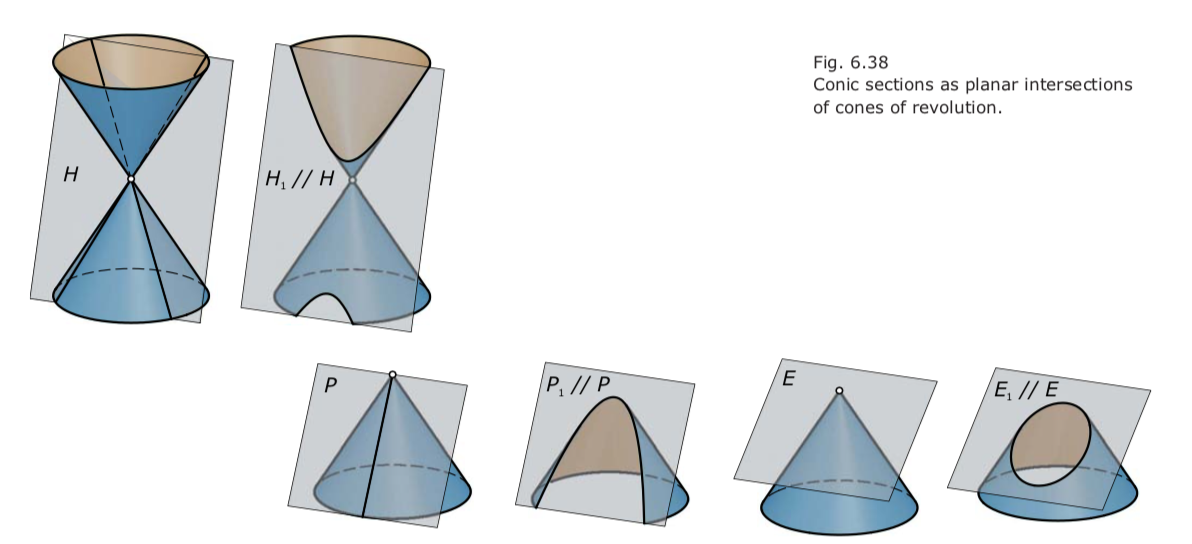Translation, rotation and reflection in space空间中的平移、旋转和对称变换
- spatial congruence transformations: 空间全等变换保shape形状,保distance距离
- 分两类:
- direct congruence transformation (右手坐标架right-handed coordinate frame),
- opposite congruence transformation (left-handed coordinate fram)
- translation 平移
x1 =x+a,
y1 =y+b,
z1 =z+c, - rotation 旋转
关于z-axis旋转:
x1 = x · cos ρ – y · sin ρ,
y1 = x · sin ρ + y · cos ρ,
z1 = z
关于x-axis旋转:
x1 = x,
y1 = y · cos ρ – z · sin ρ,
z1 = y · sin ρ + z · cos ρ,
关于y-axis旋转:
x1 = x · cos ρ + z · sin ρ,
y1 = y,
z1 = –x · sin ρ + z · cos ρ.
- reflection反射

- glide reflection 滑动对称:先对称在平移;是direct congruence变换;
x1 =x+a,
y1 =y+b,
z1 = –z. - One can prove that the composition of a reflection and a rotation is always a single glide reflection or a simple reflection. 对称和旋转变换的复合总是一个简单的滑动对称或简单的对称变换。
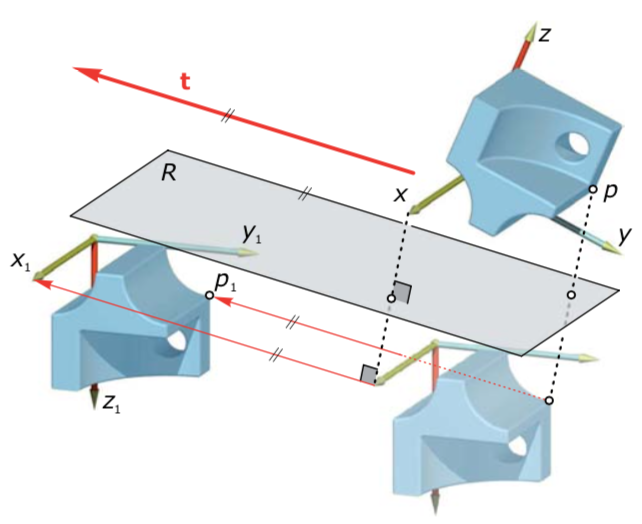
Helical transformation 螺旋变换
- The most general opposite congruence transformation is the glide reflection, a combination of a reflection and a special translation. 滑动对称是最一般的相对全等变换,是对称和平移变换的复合。
- The helical transformation, as the direct congruence counterpart to the glide reflection, is the composition of a rotation about the helical axis A and a translation parallel to this axis. 螺旋变换是滑动对称变换,关于螺旋轴旋转再复合关于螺旋轴方向的平移。

- Given any two distinct (directly congruent) positions of a rigid body, we can always find a unique helical transformation that transfers one position to the other. 一个刚体的任何两个位置之间的变换,都可以找到唯一的螺旋变换。
x1 = x · cos ρ – y · sin ρ,
y1 = x · sin ρ + y · cos ρ,
z1 =z+p·ρ. - 螺旋变换好的性质:
- Every helix lies on the surface of a rotational cylinder F. The axis of this supporting cylinder is the helical axis.
- The angle α between the tangents of all points of the helix and a normal plane of the axis is constant.
- As a consequence, when we cut the supporting cylinder along a straight line (parallel to the axis) and unfold the cylinder into a plane the helix $c^d$ becomes a straight line cd in this planar development $F^d$.
- If we apply to a helix the generating helical motion, it moves in itself (as a whole). This is important for the working effect of screws.


Fig. 最美修道院
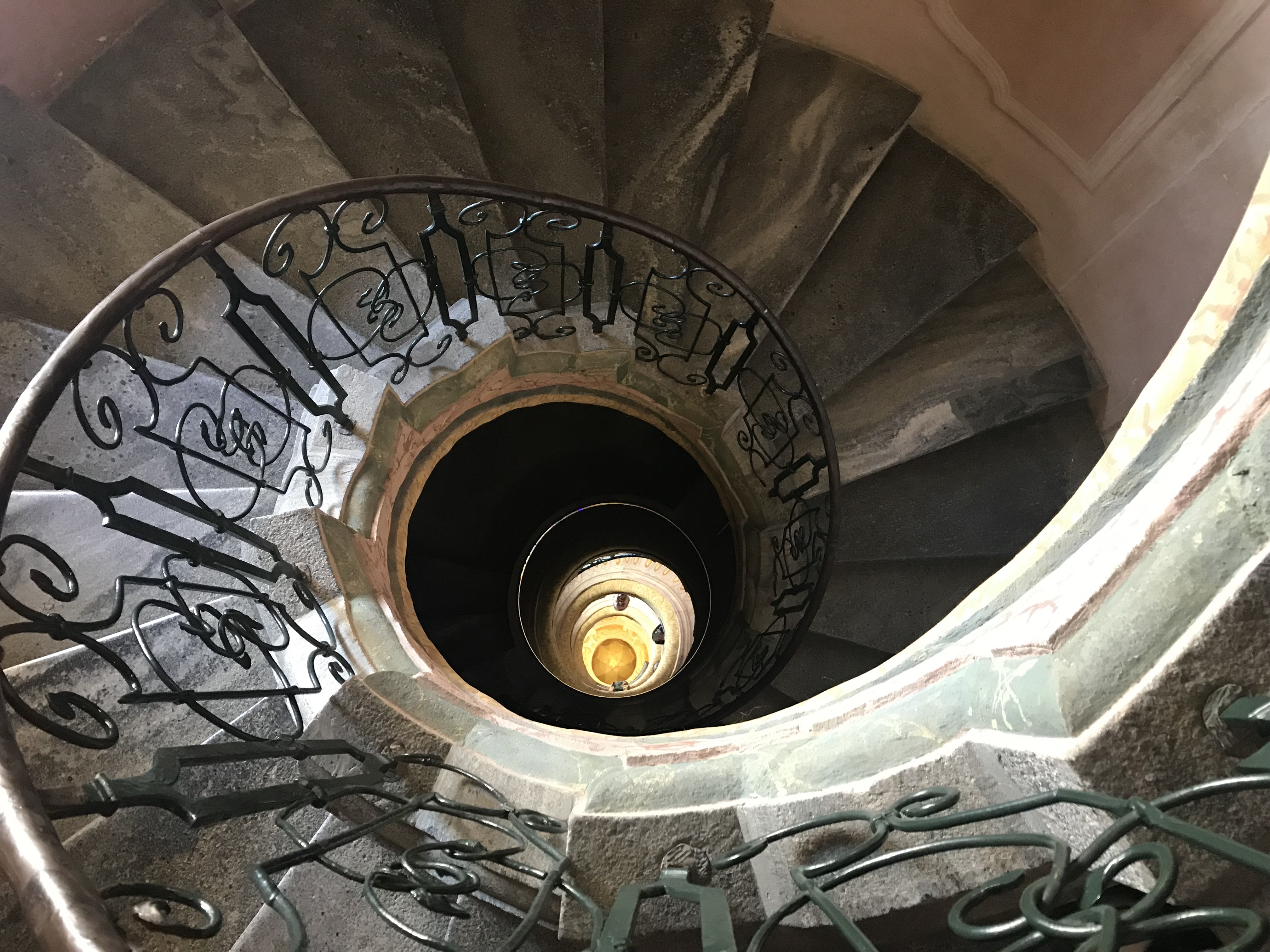
Fig. 拍摄于奥地利Melk修道院
Smooth motions and animation 光滑运动和动画
- three basic scenarios:
- 固定摄像机移动物体;
- 固定物体,移动摄像机;
- 摄像机和物体都移动。
Affine transformation 仿射变换
\(x1 =a·x+b·y+c·z+u,\)
\(y1 =d·x+e·y+f·z+v,\)
\(z1 =g·x+h·y+i·z+w.\)
性质:
- Straight lines are mapped into straight lines.
- Planes are mapped into planes.
- Parallel lines (planes) are transformed into parallel lines (planes).
- The ratio of the lengths of two line segments on parallel lines is preserved during the transformation.
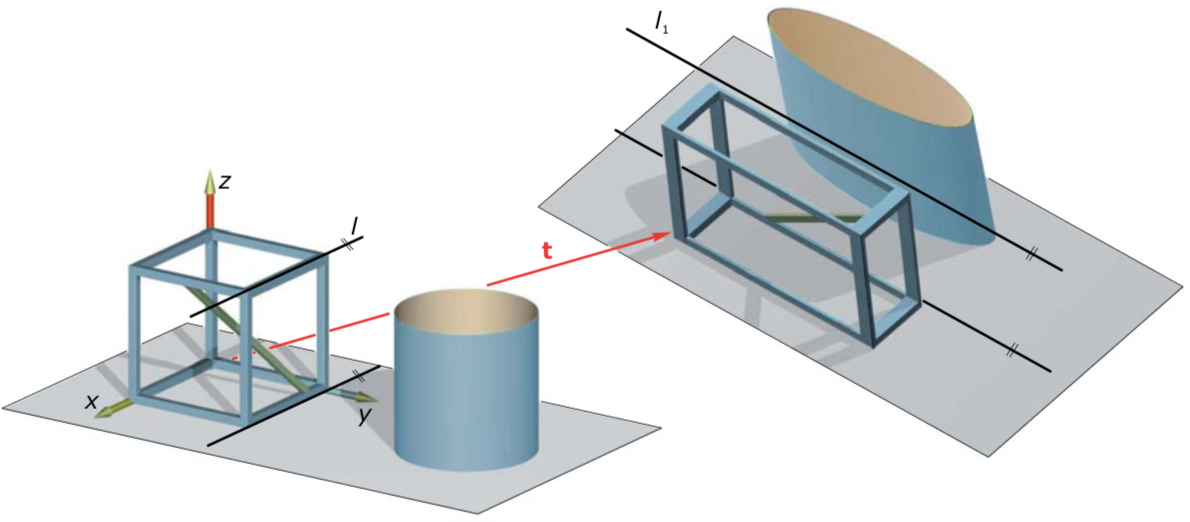
- Parallel projection is also a special case of an affine transformation—where three-dimensional space is mapped into a plane.
- shear transformation :
\(x_1=x+c\cdot z;\)
\(y_1=y+f\cdot z;\)
\(z_1=z.\)
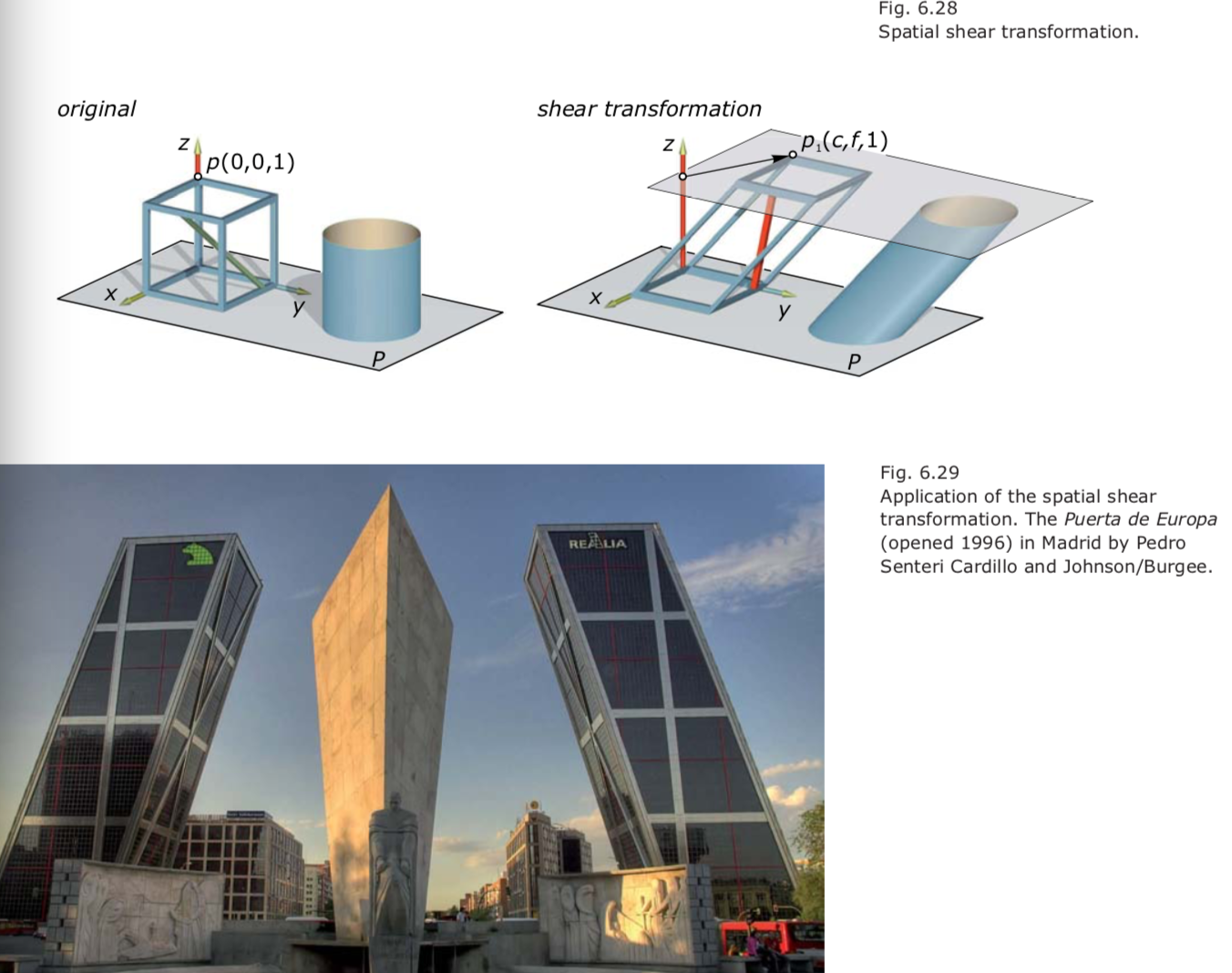
- spiral transformation:
\(x1 = k(ρ)·x·cos ρ – k(ρ)·y·sin ρ,\)
\(y1 = k(ρ)·x·sin ρ + k(ρ)·y·cos ρ,\)
\(z1 = k(ρ)·z,\)
\(k(ρ) = epρ.\)
Projective transformation
-
Affine transformations constitute the class of linear transformations (i.e., line- preserving) that maps parallel lines into parallel lines.
- Degenerate here means that a parallel projection maps three-dimensional space to a two-dimensional plane, whereas nondegenerate affine transformations map spatial objects into spatial objects.
- Parallel projection maps certain lines (namely, projection rays) into points, whereas general affine transformations always map straight lines into straight lines.
- The perspective projection maps three-dimensional space into a two-dimensional plane. Most straight lines are mapped to straight lines, an exception being projection rays (which are mapped into points).
- General projective transformations map three-dimensional space into three- dimensional space such that any straight line is mapped into a straight line.
-
General projective transformations do not preserve lengths, angles, parallelism, or ratios.
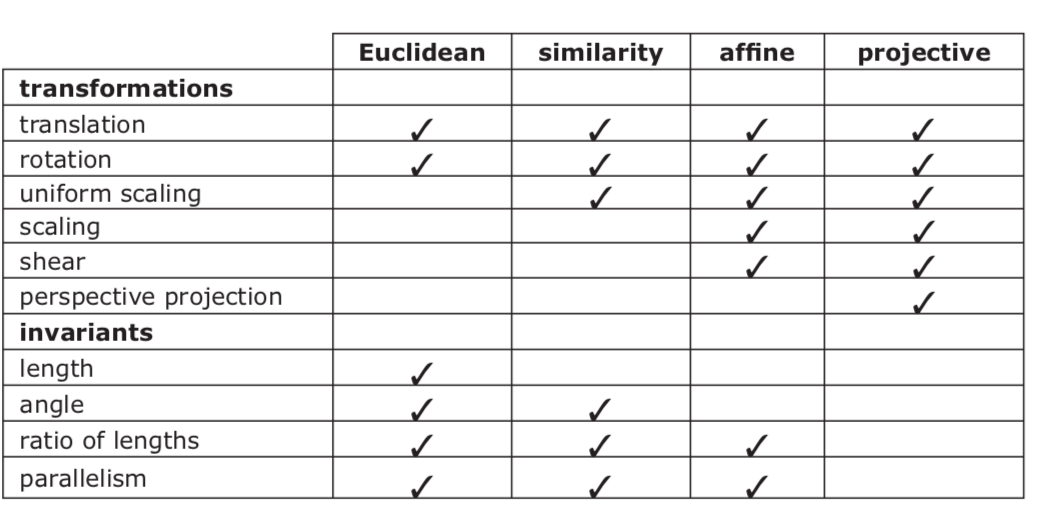
- Projective imalges of circles: The image of a circle c under a projective transformation is always a conic: an ellipse (including the case of a circle), a parabola, or a hyperbola.
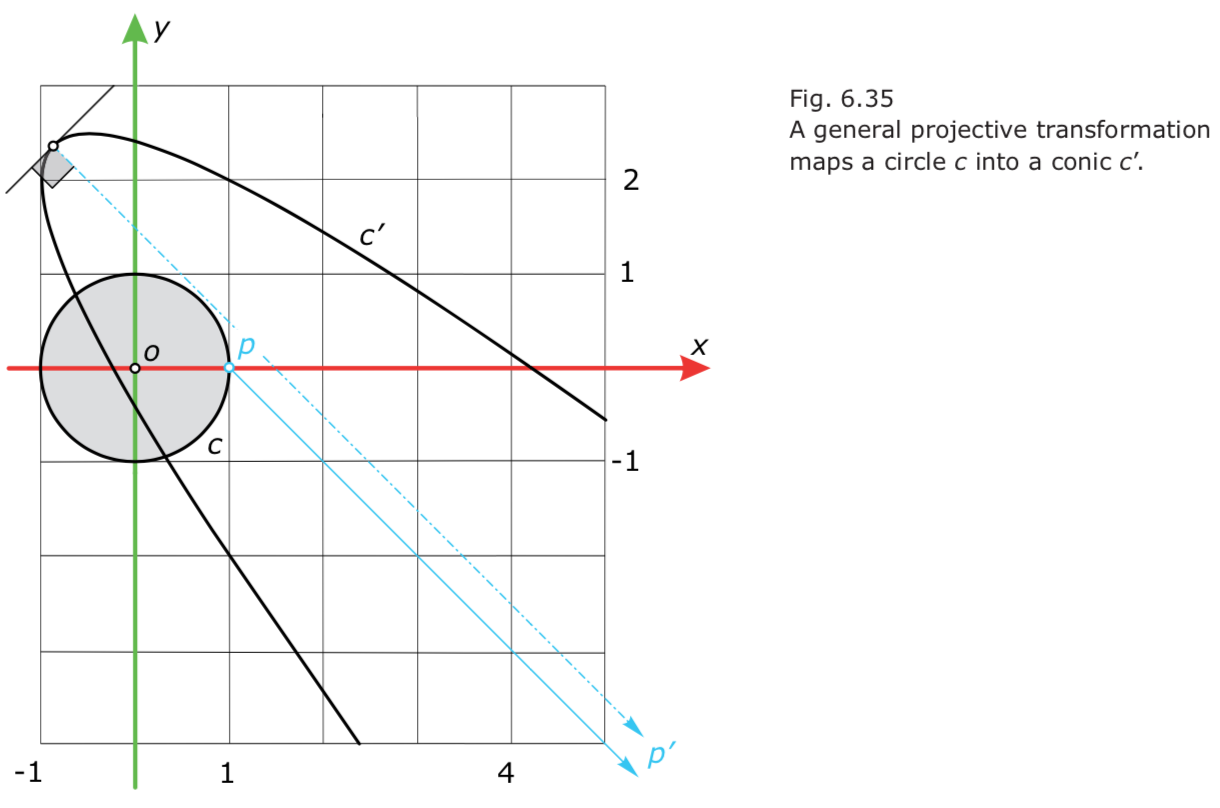
- Planes H that intersect along two rulings ~ All planes parallel to a plane H cut the cone along a hyperbola.
- Planes P that touch along one ruling ~ All planes parallel to a plane P intersect the cone along a parabola.
- Planes E that intersect only at the vertex of the cone ~ All planes parallel to a plane E intersect the cone along an ellipse.
